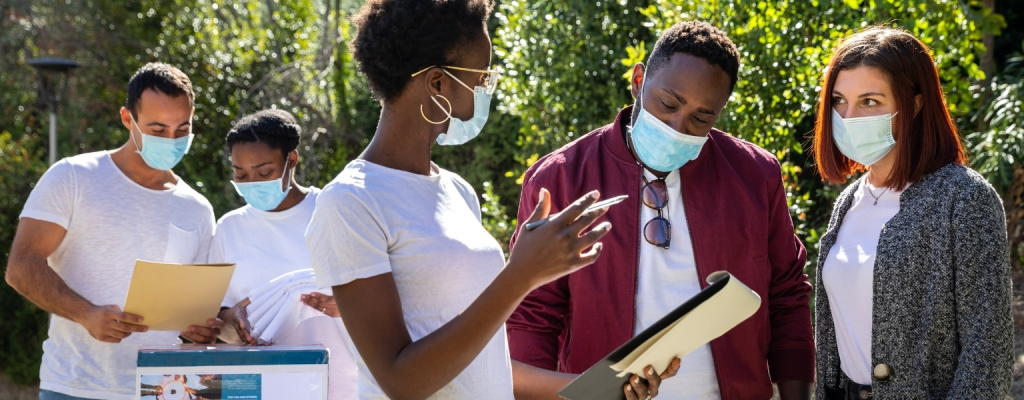Public health campaigns represent one of the most powerful tools in modern medicine’s arsenal, wielding the ability to prevent disease, save lives, and transform entire communities through strategic communication. These carefully orchestrated initiatives go far beyond simple awareness-raising—they create lasting behavioral changes that ripple through populations, preventing countless deaths and reducing healthcare burdens worldwide.
From the dramatic reduction in smoking rates achieved by anti-tobacco campaigns to the millions of lives saved through vaccination programs, public health campaigns have consistently demonstrated their capacity to address complex health challenges at scale.
By combining scientific evidence with compelling messaging, these campaigns bridge the gap between medical knowledge and public action, making health information accessible and actionable for diverse audiences. The success of campaigns like WHO’s “SAVE LIVES: Clean Your Hands” and the CDC’s Million Hearts initiative proves that well-designed health communication can achieve what individual medical interventions alone cannot—population-wide behavioral transformation that saves lives.
The Science Behind Effective Health Communication
Behavioral change theory forms the foundation of successful public health campaigns, utilizing frameworks like the Health Belief Model and Social Cognitive Theory to understand how people make health decisions. These campaigns work by addressing multiple psychological and social factors that influence behavior, including perceived risk, self-efficacy, and social norms. Research consistently shows that campaigns combining education with emotional engagement achieve the highest success rates in promoting lasting behavioral change.
The effectiveness of public health campaigns lies in their ability to reach large populations simultaneously while delivering targeted messages that resonate with specific demographic groups. Unlike individual medical consultations, campaigns can influence millions of people at once, making them incredibly cost-effective interventions for preventing disease and promoting health.
Proven Life-Saving Impact Across Health Issues
Vaccination and Disease Prevention
Public health campaigns have been instrumental in achieving some of medicine’s greatest triumphs. Vaccination campaigns have prevented millions of deaths—the World Health Organization estimates that vaccines prevented at least 10 million deaths globally between 2010 and 2015. These campaigns successfully reduced diseases like polio, measles, and mumps to near-elimination levels in developed countries through strategic messaging that addressed vaccine hesitancy and promoted immunization.
Tobacco Control Success Stories

Anti-smoking campaigns represent perhaps the most successful example of public health communication-saving lives. The Truth campaign and similar initiatives have dramatically reduced smoking rates among teenagers and young adults by exposing tobacco industry manipulation tactics and showcasing the harsh realities of smoking. These campaigns have contributed to preventing millions of tobacco-related deaths and continue to influence smoking cessation efforts worldwide.
Cardiovascular Disease Prevention
The CDC’s Million Hearts campaign demonstrates how targeted messaging can address leading causes of death. This initiative aims to prevent one million heart attacks and strokes by 2022 through simple, actionable messaging about cardiovascular health. By focusing on small, achievable changes rather than overwhelming lifestyle overhauls, the campaign makes heart disease prevention accessible to average Americans.
Strategic Elements That Drive Campaign Success
Multi-Channel Approach
Successful campaigns utilize diverse communication channels to maximize reach and impact. The most effective initiatives combine traditional media (television, radio, print) with digital platforms, social media, and community outreach. This multi-modal approach ensures messages reach different demographic groups through their preferred communication channels.
Emotional Connection and Storytelling
Campaigns that save lives go beyond presenting facts—they create emotional connections that motivate action. The Ice Bucket Challenge for ALS research raised $115 million in 60 days by combining awareness with an engaging, shareable activity that created personal investment in the cause. Similarly, breast cancer awareness campaigns like “Know Your Lemons” use creative visual strategies to make complex medical information accessible and memorable.
Community Engagement and Cultural Sensitivity
The most impactful campaigns recognize that one size doesn’t fit all when it comes to health communication. Successful initiatives like the Wazazi Nipendeni Safe Motherhood campaign in Tanzania demonstrate how culturally sensitive messaging can reach over 300,000 women by addressing specific community needs and utilizing appropriate communication channels.
Measuring Real-World Impact
Public health campaigns demonstrate their life-saving potential through measurable outcomes. Systematic reviews show that well-designed campaigns consistently produce positive changes in health behaviors across large populations. These changes translate into reduced disease rates, decreased healthcare costs, and, most importantly, lives saved.
The success of campaigns is measured not just in awareness metrics but in concrete behavioral changes: increased screening rates for cancer, higher vaccination uptake, reduced risky behaviors, and improved health outcomes at the population level. For example, campaigns promoting cancer screening have successfully increased early detection rates, leading to better treatment outcomes and reduced mortality.
The Future of Life-Saving Health Communication
As digital technology continues to evolve, public health campaigns are becoming increasingly sophisticated in their ability to target specific populations and deliver personalized messages. The integration of social media, mobile health technologies, and data analytics allows campaigns to reach previously underserved communities and adapt messaging in real time based on audience response.
The COVID-19 pandemic highlighted both the critical importance and the challenges of public health communication. Successful campaigns like “#ThisIsOurShot” demonstrated how strategic messaging could increase vaccination rates and build public trust during a global health crisis.
Public health campaigns will continue to evolve, but their fundamental mission remains unchanged: translating scientific knowledge into actionable information that empowers individuals and communities to make healthier choices. By combining evidence-based messaging with innovative communication strategies, these campaigns will continue to save lives and build healthier societies for generations to come.

